Introduction
Illinois’ biggest government-worker union, the American Federation of State, County and Municipal Employees, is engaged in contract negotiations with the state in an attempt to boost its salaries and benefits. As part of its negotiation tactics, AFSCME claims its “middle class” benefits are under attack. That’s why union officials are demanding up to $3 billion in salary and benefits for union members.
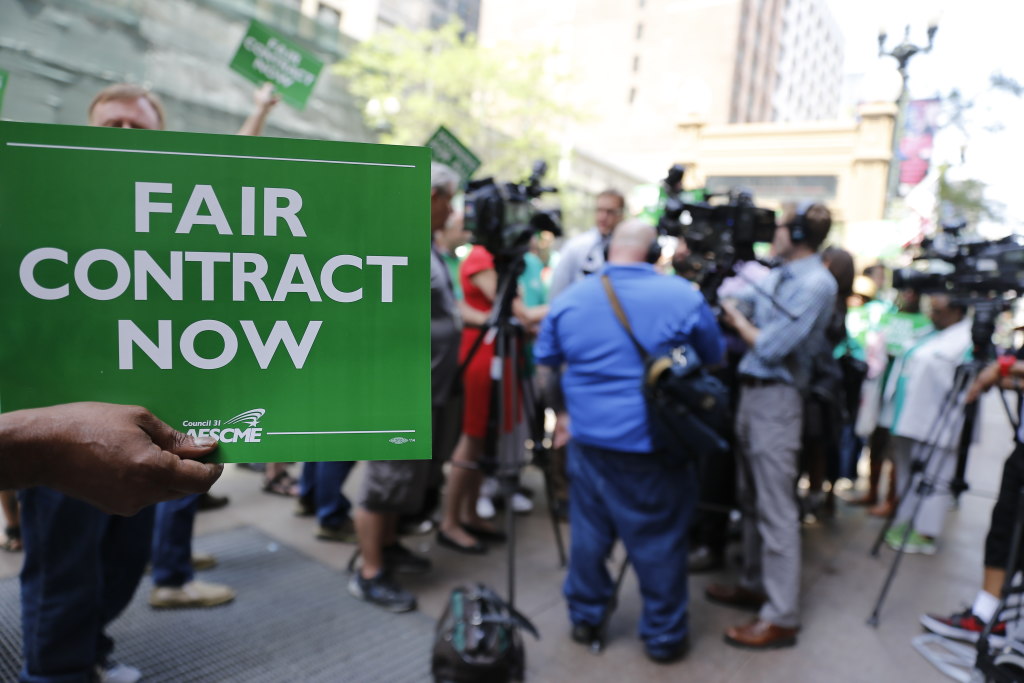
AFSCME’s demands ignore four significant facts about Illinois state-worker compensation:
- Illinois state workers are the highest-paid state workers in the country
- AFSCME workers receive Cadillac health care benefits
- Most state workers receive free retiree health insurance
- Career state retirees on average receive $1.6 million in pension benefits
It’s not fair that Illinois residents, struggling with stagnant incomes in one of the nation’s weakest economies, continue to subsidize AFSCME benefits to such an extent.
Many other unions that contract with the state have recognized that taxpayers can’t withstand higher taxes to fund workers’ pay and benefits. Officials from more than 17 unions, including the Teamsters, understand the depth of Illinois’ fiscal crisis and have been willing to compromise and come to affordable contract agreements with the state.
AFSCME, which represents a mere 0.5 percent of Illinois’ total labor force (35,000 state workers out of a total 6.5 million workers), is putting undue pressure on the state and its finances.
AFSCME’s demands include new state-worker salary, health care and pension benefits. Specifically, AFSCME leaders are seeking four-year raises ranging from 11.5 to 29 percent, a 37.5-hour workweek, five weeks of vacation and enhanced health care coverage.
In contrast, Gov. Bruce Rauner has proposed a reform plan as part of the ongoing contract negotiations with AFSCME. Under the governor’s plan, AFSCME workers would undergo a temporary salary freeze in return for new merit pay and incentive bonuses.
In addition, workers would also have their health care benefits modified. Under the reform plan, Illinois taxpayers would still subsidize 60 percent of AFSCME workers’ annual health care costs, while state workers would be asked to pay 40 percent of their costs, up from 23 percent.
It’s in the best interest of all Illinoisans to provide salary, health care and pension benefits that are affordable for both state workers and taxpayers. Instead of increasing benefits as AFSCME has demanded, the state should work to bring its employees’ total compensation more in line with what the private sector can afford.
Illinois state workers are the highest-paid state workers in the country
Illinois state workers receive the highest wages of any state workers in the country, when adjusted for cost of living. Illinois pays its state workers more than $59,000 a year when adjusted for cost of living, far more than its neighbors and nearly $10,000 more than the national average.
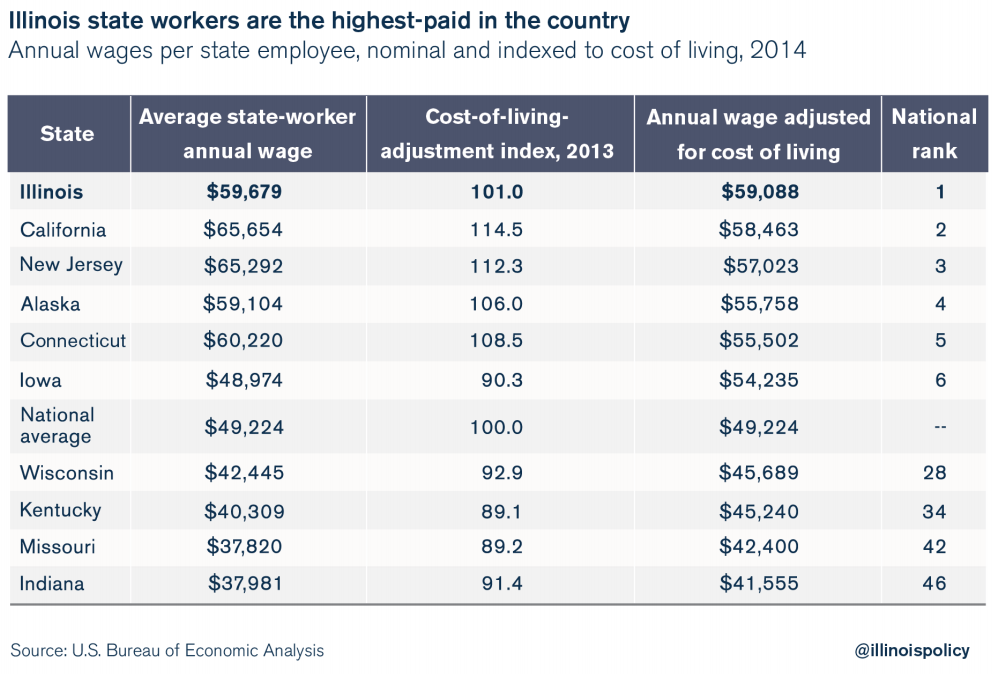
Moreover, state AFSCME workers have seen salary increases not matched by Illinois’ private sector.
Median AFSCME worker salaries increased more than 40 percent from 2005 to 2014, to more than $62,800 in 2014. During that same period, median private-sector earnings in Illinois remained virtually flat.
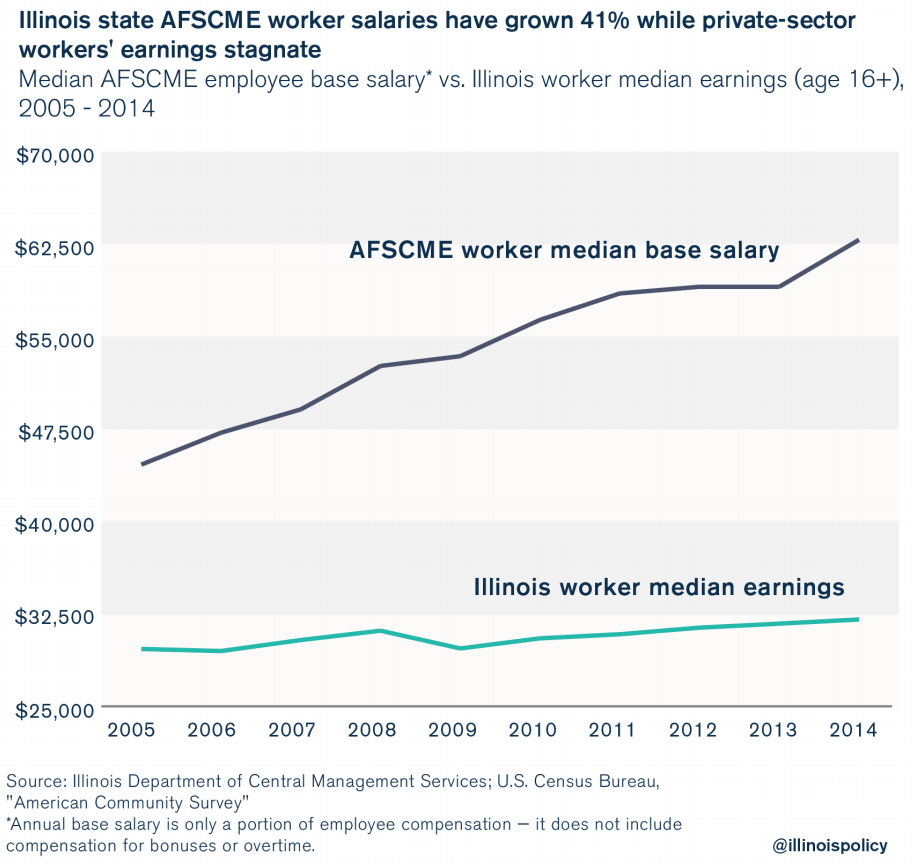
AFSCME workers receive Cadillac health care benefits
In addition to being some of the highest-paid state workers in the nation, AFSCME workers also receive Cadillac health care. Taxpayers subsidize a majority of these health care benefits.
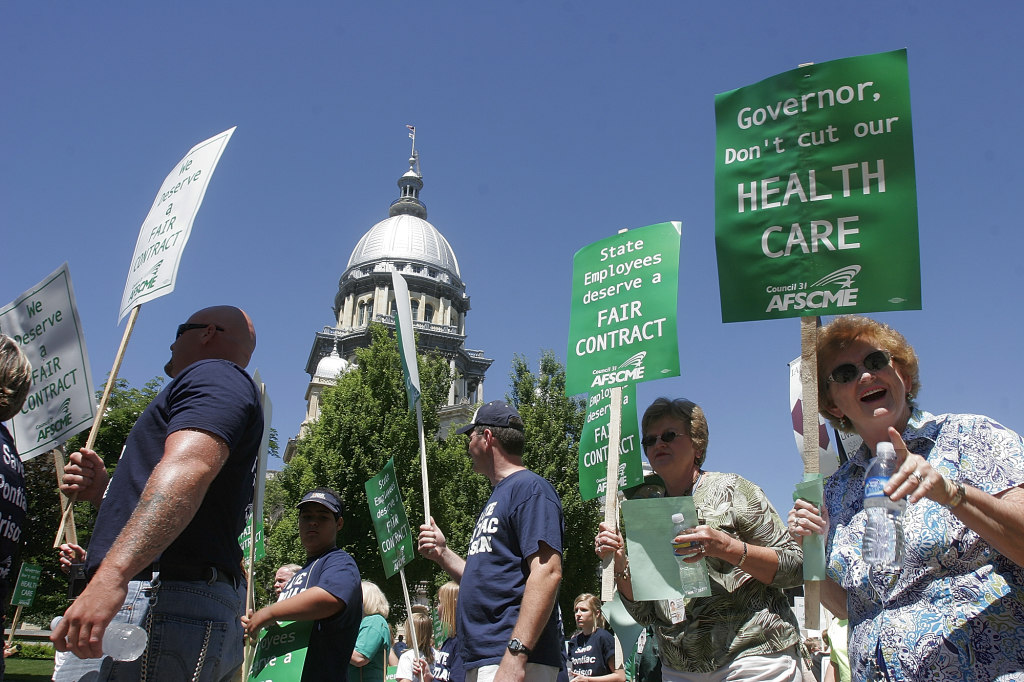
State AFSCME workers receive insurance benefits equivalent to a platinum-level plan offered through the Affordable Care Act, or ACA, insurance marketplace. Platinum-level insurance is defined as any plan that pays for 90 percent or more of an individual’s incurred health care expenses (e.g., broken arms, office visits, etc.). Individuals pay the remainder out of pocket through copays, coinsurance and deductibles.
The average health care cost for an AFSCME worker totals $19,332 a year ($1,611 a month).
AFSCME workers pay for just 23 percent of that cost, or $4,452 a year ($371 a month). That includes $2,904 in premium payments and $1,548 in out-of-pocket expenses, such as deductibles and copays.
State taxpayers pay the remaining 77 percent, or an average of $14,880 per worker ($1,240 a month).
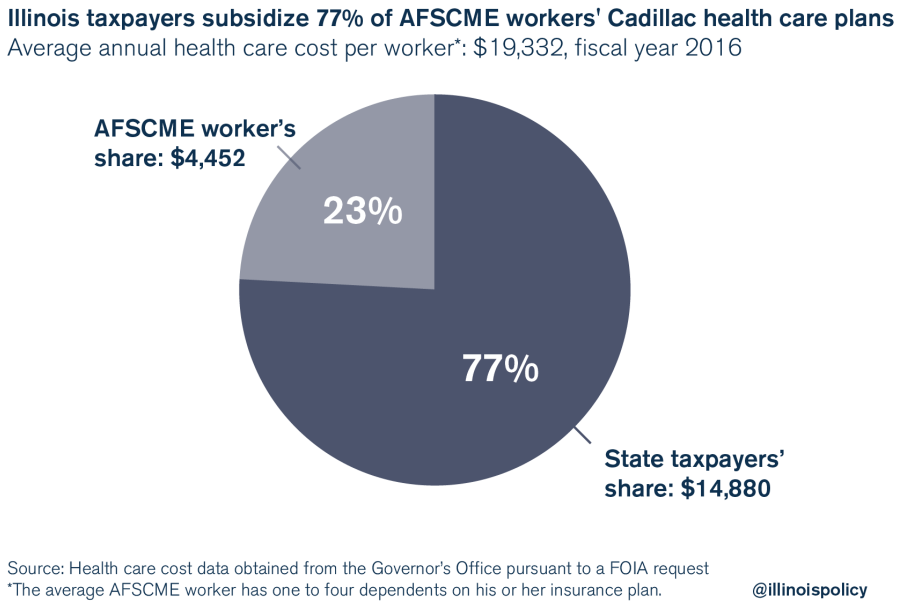
Illinois taxpayers cannot afford this arrangement. AFSCME workers receive platinum-level benefits but only pay the equivalent of bronze-level insurance premiums. These Cadillac plans force a vast share of workers’ health care costs onto state taxpayers.
Most state workers receive free retiree health insurance
In addition to Cadillac health care benefits for active AFSCME workers, the state also subsidizes 100 percent of the health insurance costs for most state retirees.
State workers receive a 5 percent reduction off of the cost of their retiree insurance premiums for each year they work for the state. Under this deal, the state pays for 100 percent of health insurance premiums for an employee who works 20 years for the state.
As a vast majority of Illinois state workers retire with 20 or more years of service, Illinois taxpayers pay for the entirety of those workers’ health insurance costs.
The taxpayer cost of this benefit is $200,000 to $500,000 per employee, depending on when the worker was hired, how long he or she worked, and when he or she retired.
An ordinary worker in the private sector would need to have $200,000 to $500,000 in the bank before retirement to purchase the same retiree health insurance that most state workers get for free.

Illinois is one of only a few states in the country to offer such a deal. Taxpayers in other states, on average, pay for less than half of their state retirees’ health insurance costs.
Such a benefit is nearly unheard of in the private sector. Only 25 percent of large firms across the country offer health insurance to both their active workers and retirees. And in cases where private-sector workers do receive retiree health insurance from their place of work, those workers typically pay all or most of their insurance premiums themselves.
State workers on average receive $1.6 million in pension benefits
Big salaries for Illinois state workers become big pension benefits when they retire.
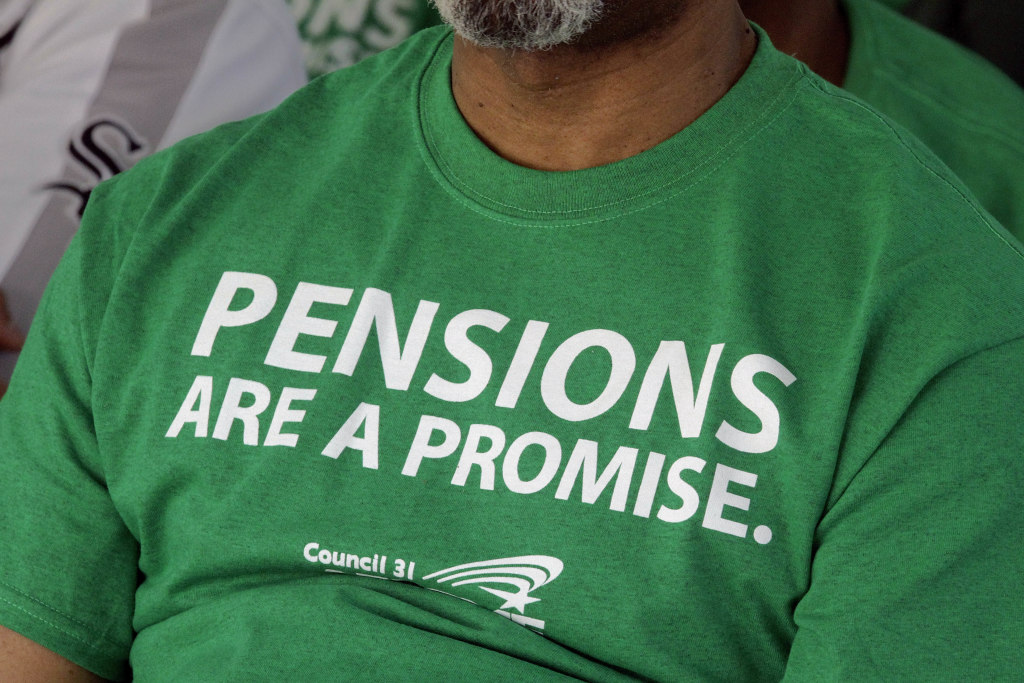
Career state workers, those who work 30 or more years, will average $1.6 million in benefits over the course of their retirements. That’s on top of Social Security benefits that nearly all state workers receive. Generous retirement rules, longer life expectancies, and substantial cost-of-living increases have boosted pension benefits. The pension crisis is worsened by the fact that over half of state workers retire in their 50s.

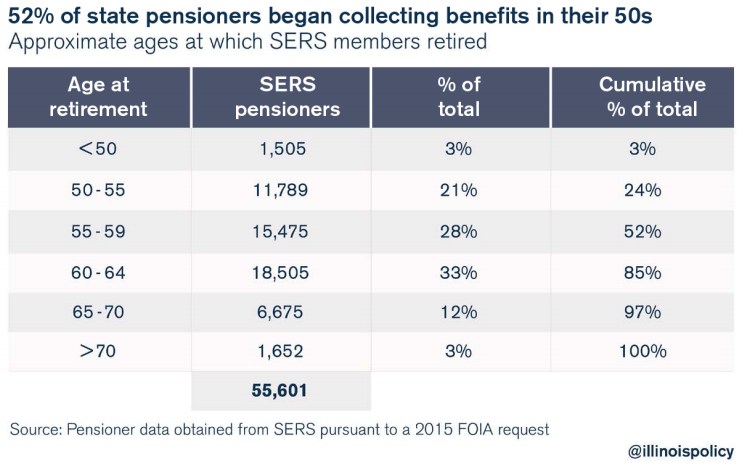
In all, state workers pay the equivalent of just 4 percent of their total pension benefits to the pension fund (8 percent, including investment returns).
This difference between what a state worker puts in and the benefits he receives in return is fundamentally unfair to the Illinois taxpayers who must pay for pensions. Private-sector workers are expected to fund the pensions of government workers who will earn back what they contributed to the pension funds after just a little more than a year in retirement.
The governor’s proposed reforms
Rauner has proposed a set of compensation-reform plans as part of the ongoing contract negotiations with AFSCME. The governor’s proposed reforms for AFSCME workers would bring their costs more in line with what the private sector can afford, while still providing generous compensation to state workers.
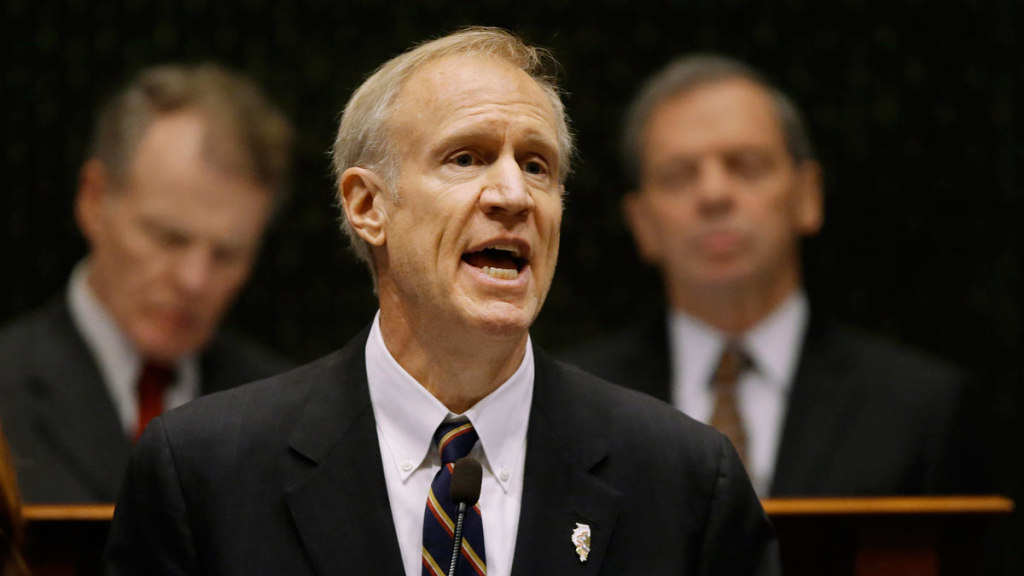
Under the governor’s plan, AFSCME workers would undergo a temporary salary freeze in return for merit pay and incentive bonuses.
In addition, instead of allowing workers to continue to pay bronze-level prices for platinum health care benefits, the governor is seeking to realign AFSCME workers’ health care costs so they more closely match their corresponding benefits.
Under the governor’s plan, Illinois taxpayers would still subsidize 60 percent of AFSCME workers’ annual health care costs, or over $11,600 per worker annually. Workers would be asked to pay 40 percent of their costs, or $7,728 a year, up from 23 percent.
The governor’s reform proposal offers state workers a choice regarding how they want to pay for their increased share of their health insurance costs.
State workers could choose to keep their current monthly premiums and pay additional out-of-pocket expenses, pay the same out-of-pocket expenses but have their monthly premiums grow, or a combination of the two.
The governor’s attempt to more closely align state-worker health care costs with those in the private sector should also be understood in the context of the wages AFSCME members and other state workers currently receive.
Asking AFSCME workers to contribute their fair share for their own health care benefits is not out of line considering that most state workers receive free retiree health insurance, that Illinois state workers in general receive the highest wages in the nation, and that AFSCME workers in particular have seen their salaries grow significantly over the past decade.
It would also help relieve some of the financial burden on Illinois’ private-sector workers, who are suffering from stagnating wages and massive health care cost increases due to the impact of the ACA. Younger Illinoisans on the ACA health insurance exchanges have been hit particularly hard. Between 2013 and 2015, premiums jumped 132 percent, or by over $1,800, for younger individuals. And in 2016 alone, the average premium for all individuals in Illinois will grow by another 22 percent.
Conclusion
Illinois middle-class residents, struggling with stagnant incomes in one of the nation’s weakest economies, can no longer afford to subsidize AFSCME workers’ unrealistic benefits.
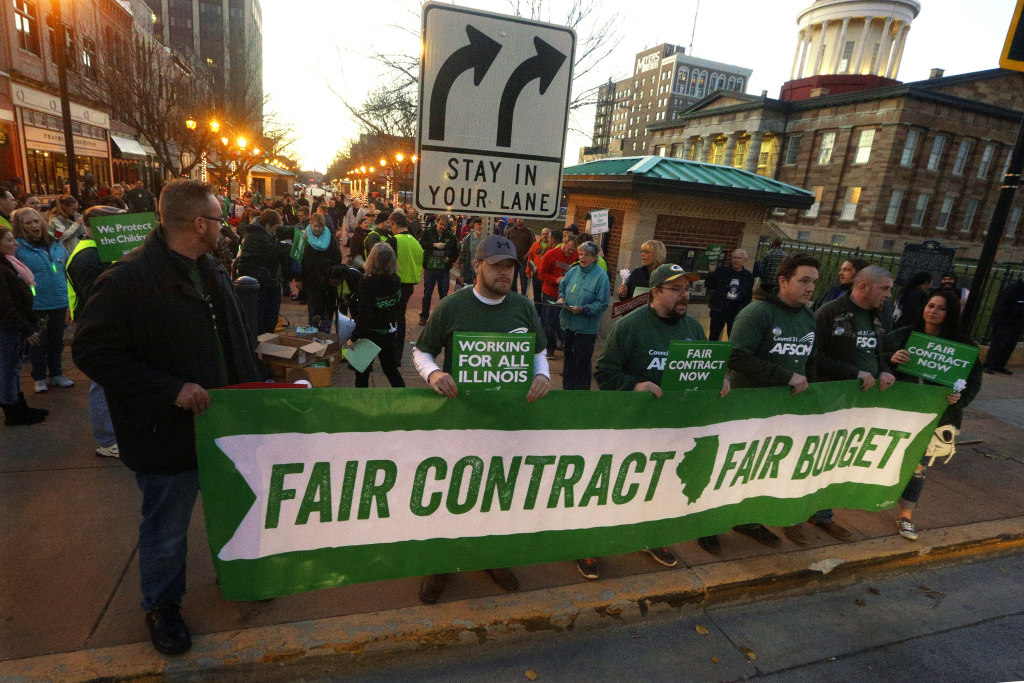
Instead of demanding additional benefits, AFSCME should follow the lead of the 17 other state unions that have come to an affordable compromise with the state.
It’s in the best interest of all Illinoisans to provide salary, health care and pension benefits that are affordable for both state workers and taxpayers. Instead of increasing benefits as AFSCME has demanded, the state should work to bring its employees’ total compensation more in line with what the private sector can afford.